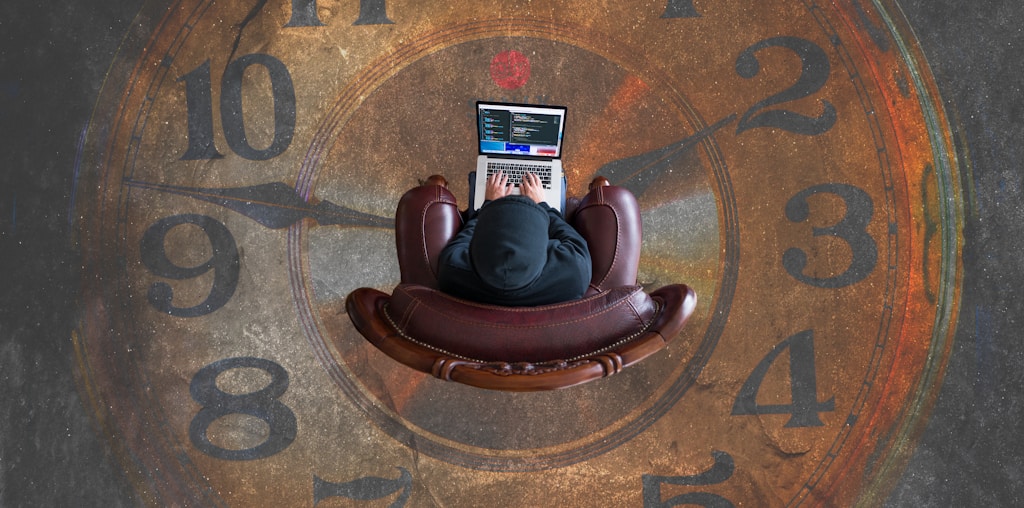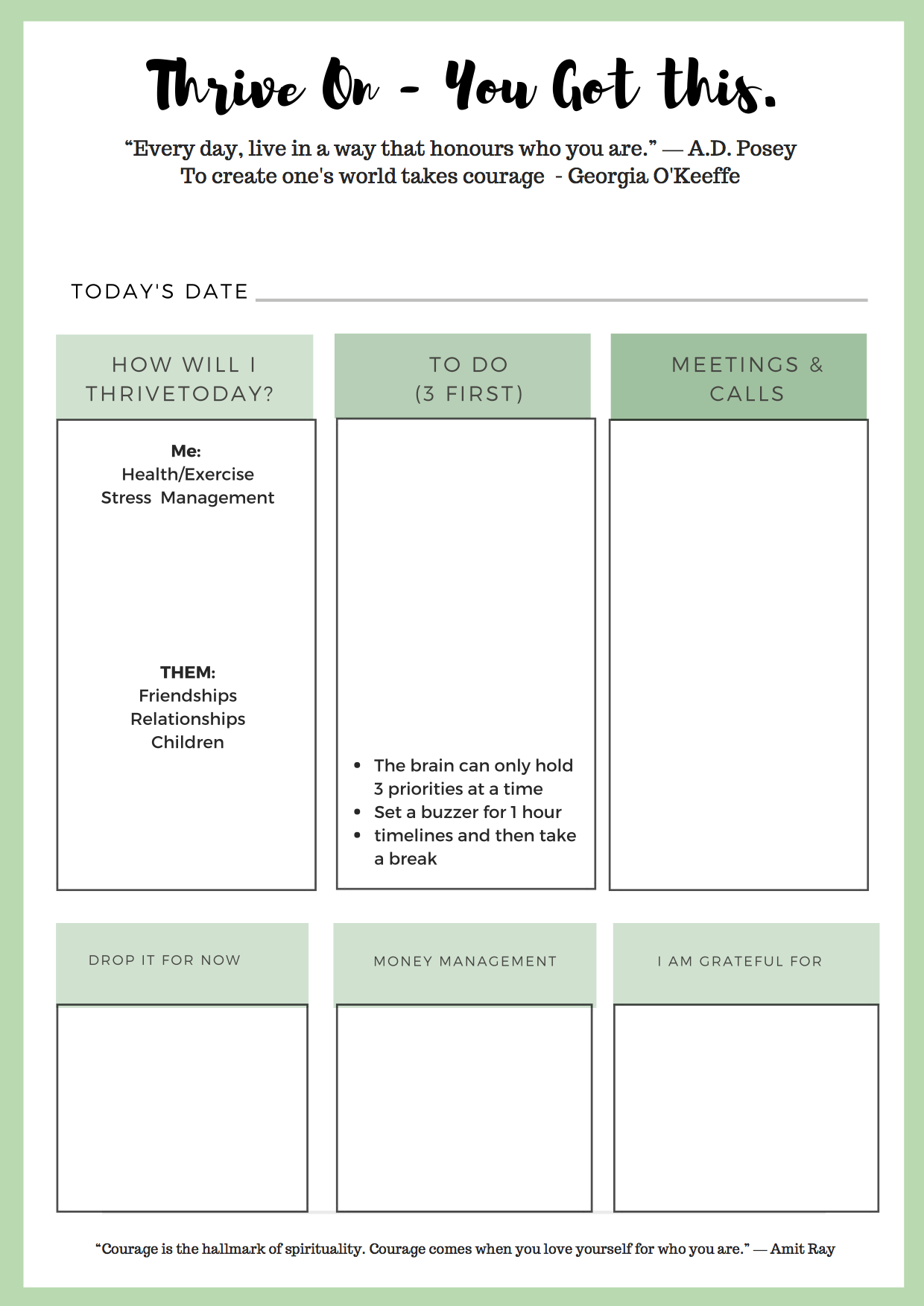It is critical you protect your time for what truly matters to you. Here are some tips, scripts, and daily productivity planners that you can print off.
TIME MANAGEMENT TIPS
Most entrepreneurs and professional women know that you have to network like crazy to get the right opportunities but that means that you also need to protect your calendar like a ninja. START BY SCHEDULING YOUR TOP PRIORITIES
- FIRST on the calendar: Just a few personal things to consider first – Health appointments, children’s activities, date night, exercise time, THEN THE BUSINESS STUFF. This will help you protect your health and wellbeing and avoid burnout. Then schedule other items. Business items always tend to get done but personal stuff is the first to go so that’s why it should always be the first thing scheduled in your calendar.
- If you are a business owner start with setting up an auto-booking system for people wanting to speak with you. Here’s what I use – picktime
- Chunk tasks – look at e-mail only certain times a day
- Look at productivity systems and see what works for you (see below)
- Learn to say no
- Write out your priorities and keep them posted as a reminder (be sure to look at the various aspects of your life).
- Take breaks through the day
- Exercise (helps to manage stress and maximizes creativity)
- Drink water (again great for taking a moment for yourself and hydration eases anxiety)
- De-clutter your workspace (have a dedicated workspace)
- Organize paperwork every few days
- Assign days of the week for certain tasks (or dedicate certain times during your day)
PRODUCTIVITY METHODS (ADAPTED FROM TEAM GANTT)
1. GETTING THINGS DONE (GTD)
Getting Things Done is the brainchild of David Allen, as explained in his book, Getting Things Done.
HOW GETTING THINGS DONE WORKS
The Getting Things Done process begins with a massive brain dump to clear the mind of all the conceivable tasks in your life. Once the tasks are all put on paper, you can begin getting them done.
Getting Things Done is the modus operandi for many successful people. Allen covers 6 areas of focus:
- Current actions
- Current projects
- Areas of responsibility
- 1-2 year goals
- 3-5 year goals
- Life goals
Once all your tasks are outlined and organized into one of these 6 categories, you can begin knocking them out.
- Things that don’t take much time should be done soon. (“If it takes less than two minutes, then do it now.”)
- Things that take a long time, such as a major project, should be broken down into a series of smaller, quicker projects.
ADVANTAGES
Getting Things Done has the advantage of putting you in control of your entire life.
DRAWBACKS
The startup time that’s required may be hard for some people, and implementation can be complicated.
2. POMODORO TECHNIQUE
A productivity guru named Francesco Cirillo invented the Pomorodo Technique, a productivity system built on the idea of getting things done in predetermined blocks of time.
HOW THE POMODORO TECHNIQUE WORKS
Implementing Pomodoro is very simple. You break a task up into 25-minute segments, called Pomodoros. In between each Pomodoro, you take a 5-minute break. After 4 Pomodoros, you take a longer break.
Some devotees use a cute tomato-shaped timer set at 25 minutes. Seriously. (Pomodoro is tomato sauce in the culinary world.)
There are 6 objectives in organizing your schedule Pomodoro-style.
- Find out how much effort an activity requires, divided into Pomodoros (25 minutes)
- Protect your Pomodoro from any and all interruptions.
- Estimate the Pomodoros needed for an activity.
- Structure each Pomodoro into a 3-step process: 1) Recap, 2) Work, 3) Review
- Create a timetable that matches your workflow and life.
- Focus on your personal objectives.
The ideas of Pomodoro are explained in the book The Pomodoro Technique.
ADVANTAGES
The advantages of the Pomodoro Technique are 4-fold:
- Work with time, not against it.
- Eliminate burnout.
- Manage distractions.
- Create a better work-life balance.
DRAWBACKS
Pomodoro works well for micromanaging your workday, but it limits flexibility and interactivity. Some people find it too structured, preventing them from coping with the shifting demands of a high-pressure, multitasking job.
3. ZEN TO DONE (ZTD)
Zen to Done, pioneered by Leo Babauta, is explained in his book, Zen to Done. The premise is this: “It’s about the habits and the doing, not the system or the tools.”
ZEN TO DONE VS. GETTING THINGS DONE: KEY DIFFERENCES
Zen to Done piggybacks on Getting Things Done, but reverses some of its alleged shortcomings.
- Zen to Done focuses on habits, where Getting Things Done focuses on the system.
- Zen to Done focuses more on actually doing the tasks, whereas Getting Things Done seems to focus on creating a system and hoping the system will produce higher levels of productivity.
- Zen to Done focuses on structuring a day around 3 MITs (Most Important Tasks) and the week around several Big Rocks (major projects), in contrast to the unstructured nature of Getting Things Done.
- Zen to Done focuses on simplification, allowing you to focus on the essentials (rather than trying to do everything).
- Zen to Done focuses on goal achievement (top-down), whereas Getting Things Done is a bottom-up approach, doing whatever little things come at you.
HOW ZEN TO DONE WORKS
Zen to Done’s emphasis on habits is one of its strongest features. Here are the 10 habits of a Zen to Done master:
- Capture ideas, tasks, and notes in a notebook so you don’t forget them.
- Make quick decisions on things in your inbox; do not put them off.
- Set MITs for each day.
- Do one task at a time, without distractions.
- Keep simple lists; check them daily.
- Have a place for everything.
- Review your system and goals weekly.
- Reduce your goals and tasks to essentials.
- Set and keep routines.
- Seek work for which you’re passionate.
ADVANTAGES
Zen to Done is a beautifully simple system, which makes it easy to adopt and implement, with little to no startup time. (Full disclosure: This is the system the author uses.)
DRAWBACKS
Zen to Done doesn’t work for every type of workflow management. Some find that it does not have a structured approach to managing time because of its focus on tasks.
4. DON’T BREAK THE CHAIN
This system, inspired by Jerry Seinfeld, focuses on creative success. It has helped people in creative occupations become more systematic and disciplined in accomplishing their tasks.
HOW DON’T BREAK THE CHAIN WORKS
Here’s how Don’t Break the Chain got started. Seinfeld started off the new year with a big calendar. He made a big, fat, red X over each day in which he successfully accomplished his goal of writing new material.
That’s it.
And that’s the system.
- Get a calendar.
- Decide what you want to accomplish each day.
- Mark an X over each day you accomplish your goal.
Adam Dachis of Lifehacker says this system “fixed my procrastination problem.” He explains how to put the system in place:
- Figure out your goals. Three is a good starting point.
- Define the daily minimums for each goal. For example: Do 3 pushups, clean office for 5 minutes.
- Create a plan for lapses. You’re going to miss your goal sometimes, so allow your chain to accommodate occasional breaks. For example, allow yourself to put an X in a different color if you’re sick or on vacation, or allow yourself 3 floating “skips” each month.
- Put your calendar in a prominent place on your wall.
- Use a huge red marker, and put an X over each day you’re successful.
ADVANTAGES
Don’t Break the Chain can help you with your procrastination. It’s basically a hack to build consistency, form habits, and gradually achieve your goals.
Don’t Break the Chain is very simple. You can start right now.
DRAWBACKS
Because of its simplicity, it doesn’t exactly work for organizing an entire day or managing your hours.
HOW TO CHOOSE A PRODUCTIVITY SYSTEM.
Once you start dabbling in productivity, you start to realize something very unsettling: All this productivity stuff about streamlining and simplifying is actually very complicated. There are so many options! So many approaches! Aagh! It’s easy to freak out and go back to wallowing in your unproductive mire.
So how do you choose?
- Just pick a method. All of these systems are designed to do one thing: get stuff done. So, just pick one. Make a decision in the next 60 seconds.
- Try it. Once you try a system for at least 30 days, you’re free to stick with it or try something different.
- Make your own. Once you settle into your system, you need to customize it. Your situation is different from David Allen, Leo Babauta, and Jerry Seinfeld. You have unique needs for your specific situation.
You Might Like: 3 Reasons For Feeling Not Good Enough
WOMEN TEND TO HAVE A REAL PROBLEM SAYING NO. FIRST SOME SAYING NO TIPS:
The best thing about saying no to certain tasks is that it creates space to say yes to things that you really want to do!
- Give yourself the 24-hour rule before saying yes to something you have control over
- Give people a heads up when you are busy not to expect much from you
- Consider why you are saying yes – do you honestly have no choice? Are you driven by your ego? Are you afraid of something? Tap in and talk yourself through your reasons first before committing.
HERE ARE SOME SCRIPTS FOR SAYING NO:
Schedule a call
Appreciate the opportunity but unfortunately, I’m already committed, can we start with email? How can I help?
Take a meeting
Thanks for reaching out. Unfortunately, scheduling a meeting is tough, let’s start with an email. How can I help?
Attend an event
Thanks for the opportunity, but I’m already committed that day. Appreciate the invite.
Read a long email
Thanks for reaching out, but unfortunately I won’t be able to process your full email. How can I help?
Involvement in a new project
Thanks for thinking of me, but unfortunately I’m over-committed with XXXXX + a growing family. I’m going to have to pass this time.
Blanket NO
“Thanks for reaching out. While I appreciate the request, things have really taken off at my agency and I’m taking a vacation from 1:1 meetings because I’m focusing on growing the team and supporting them the best I can. I do appreciate you reaching out though, and if you reach back out in a few months I’ll try to accommodate your request then.”







Great article! I really loved your section about the Zen to Done approach. I struggle with getting distracted and overwhelmed, so I’m definitely going to try this out!
Looking forward to more content from you!
That’s great to hear Gabby